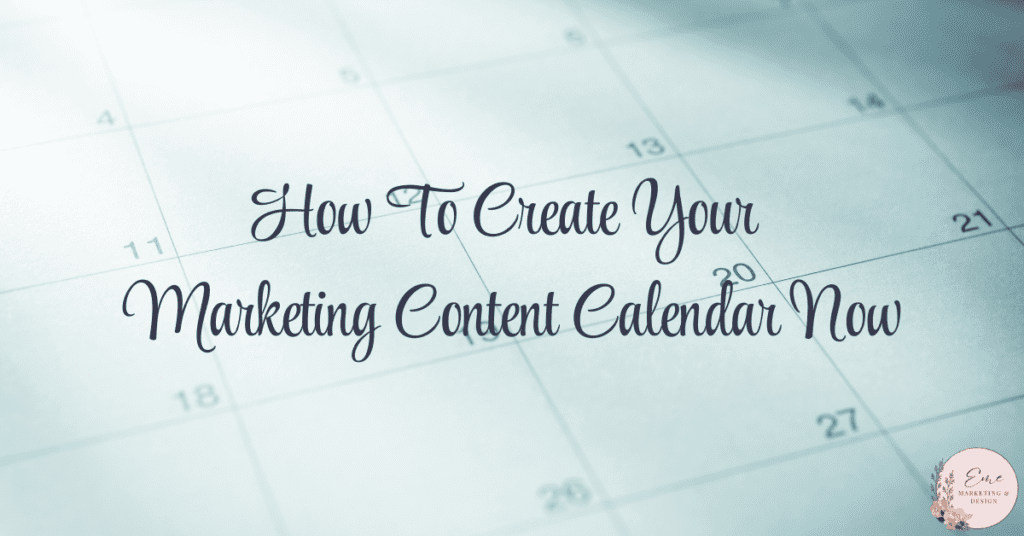
A content calendar is essential for businesses to streamline their content marketing efforts. It helps organize and schedule content effectively, ensure consistency and align content with marketing goals. This comprehensive blog will walk you through creating a content calendar tailored to your business needs.
1. Understand the Importance of a Content Calendar
A content calendar serves as a roadmap for your content strategy. It outlines what content you’ll publish, when and on which platforms. This tool offers several key benefits:
- Consistency: Regular posting keeps your audience engaged and helps build brand loyalty. A content calendar ensures that you maintain a consistent presence across all channels.
- Organization: Planning content in advance prevents last-minute rushes and helps ensure all necessary resources are in place.
- Strategic Planning: Align your content with your business goals and marketing campaigns, ensuring that your content supports your overall strategy.
- Efficiency: Streamline your workflow and avoid duplication of efforts by planning content ahead of time.
2. Define Your Content Goals
Before creating your content calendar, it’s crucial to establish clear content goals. Determine what you want to achieve with your content. Common goals include:
- Building Brand Awareness: Share content that introduces your brand, highlights its unique value proposition and educates your audience about your offerings.
- Driving Website Traffic: Develop content, such as blog posts, landing pages and promotional offers that encourage your audience to visit your website.
- Engaging with Your Audience: Post content that fosters interaction and builds relationships, such as polls, questions, and discussions.
- Generating Leads: Create content that captures leads, such as downloadable resources, webinars and special offers.
3. Identify Your Target Audience
Understanding your target audience is vital for creating relevant content. Define your ideal customers, including their demographics, interests and online behaviors. Create audience personas to guide your content creation process, ensuring that your content resonates with your audience’s needs and preferences.
4. Choose Content Types and Formats
Diversify your content to keep your audience engaged. Consider including various types and formats in your content calendar:
- Blog Posts: Provide in-depth information on topics relevant to your industry and audience.
- Social Media Posts: Share updates, promotions and engaging content on platforms like Facebook, Instagram, LinkedIn and Threads.
- Videos: Create video content such as tutorials, product demos and behind-the-scenes looks.
- Infographics: Use visual content to simplify complex information and enhance engagement.
- Ebooks and Whitepapers: Offer valuable resources that provide in-depth information and capture leads.
- Email Newsletters: Keep your audience informed with regular updates and exclusive content.
5. Plan Your Content Schedule
Determine how often you want to publish content and establish a posting frequency that aligns with your goals and resources. Your content calendar should include:
- Publication Dates: Outline when each piece of content will be published.
- Content Topics: Specify the topics you’ll cover, aligning them with your audience’s interests and content goals.
- Content Formats: Note the format of each piece of content to ensure a diverse content mix.
- Promotion Channels: Identify where you will promote each piece of content, such as on social media platforms, through email newsletters or on your website.
6. Create and Manage Your Content Calendar
You can use various tools to create and manage your content calendar:
- Google Sheets or Excel: Simple yet effective, spreadsheets allow you to track publication dates, topics, formats, and promotion channels in a customizable format.
- Content Management Systems (CMS): Many CMS platforms offer built-in content calendar features that facilitate the scheduling and management of your content.
- Project Management Tools: Asana, Trello and Monday.com provide visual content calendars, task assignments and progress tracking.
- Social Media Management Tools: Platforms like Hootsuite, Buffer and Sprout Social offer content calendar features for planning and scheduling social media posts.
7. Collaborate with Your Team
A content calendar is crucial for collaboration if a team is creating content. Share the calendar with your team to ensure everyone is on the same page. Include details such as deadlines, content responsibilities and review processes. Effective collaboration helps maintain consistency and ensures timely content creation and publishing.
8. Monitor and Adjust Your Content Strategy
Regularly monitor the performance of your content using analytics tools. Track metrics such as engagement rates, website traffic and lead generation to evaluate the effectiveness of your content. Use insights from these metrics to refine your strategy and make data-driven adjustments.
For instance, if certain types of content perform better, consider increasing their frequency. If specific topics resonate more with your audience, explore these themes further. Adapting based on performance data helps you continuously improve your content strategy.
9. Leverage Seasonal and Promotional Opportunities
Incorporate seasonal events, holidays and promotional opportunities into your content calendar. Planning content around these events allows you to capitalize on relevant trends and capture audience interest. For example, create special promotions or themed content for holidays, product launches or industry events.
Aligning your content with seasonal trends and promotions can enhance your brand’s relevance and drive engagement. Ensure you plan these opportunities to maintain a cohesive and timely strategy.
10. Evaluate and Refine Your Calendar
As you implement your content calendar, regularly evaluate its effectiveness. Assess whether your content meets your goals, engages your audience, and drives desired outcomes. Collect feedback from your audience and use performance data to refine your strategy.
Periodic reviews of your content calendar can help identify areas for improvement. Update your calendar based on new insights, business goal changes, or audience preference shifts. Continuous evaluation and refinement ensure that your content remains relevant and practical.
Final Thoughts
Creating a content calendar is fundamental for any new business looking to establish a robust online presence and effectively manage its content strategy. By defining your content goals, understanding your target audience, and planning your content schedule, you can maintain consistency, streamline your workflow, and achieve your marketing objectives.
Utilize a variety of content types, choose appropriate tools for managing your calendar, and collaborate effectively with your team. Regularly monitor performance, leverage seasonal opportunities, and refine your strategy to enhance your brand’s visibility and engagement.
With a well-structured content calendar, you can effectively plan and execute your content strategy, driving meaningful results and positioning your new business for long-term success in the competitive digital landscape.
Resources:
Next Steps
Ready to take your social media and online presence to the next level? Partner with us to unlock the full potential of your brand’s digital marketing efforts. We offer tailored solutions, including social media strategy development, content creation, and comprehensive analytics to ensure your business thrives online. Whether you’re just starting or looking to refine your existing strategy, our team of experts will work closely to create a customized plan that aligns with your goals. Let’s collaborate to boost engagement, increase visibility, and drive measurable results. Contact us today to discuss how we can help your business grow!




